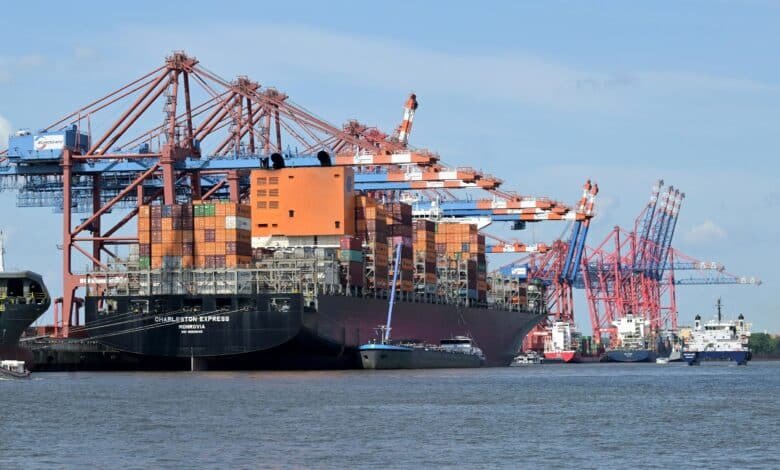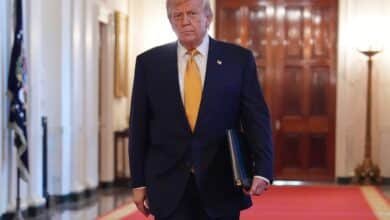The United States trade deficit was significantly reduced in the midst of Trump’s rates escalation

The United States trade deficit was significantly reduced in April when President Donald Trump abruptly intensified tariffs before stopping a large strip of taxes, United States Department of Commerce Thursday’s data showed.
Trump promoted tariffs as an effort to reduce the commercial deficit of the nation, which the president has said he considers a threat to the economic prosperity of the nation. However, many economists do not agree, saying that the commercial deficit reflects the engine driven by the US economy.
The commercial gap fell in more than half in April as imports submerged, according to the data. The United States registered a commercial deficit of approximately $ 61 billion in April, marking a strong decrease in a commercial gap of $ 140 billion a month earlier.
Imports fell into 16% in April as some commercial barriers entered into force, according to the data. Imports had struck a month before when some companies rushed to store the supply before the levies loaded them with additional costs.
The commercial gap of the Nation is well below the deficit of $ 131 billion registered in January, the month Trump assumed the position.
The perspective is cloudy for Trump’s tariff policy and the economy in general.
Trump’s approach again and out of tariffs leaves doubts at his final level. A couple of judicial decisions last week pushed Trump’s most steep tariffs to Limbo, adding another layer of uncertainty as the judges of the Federal Court of Appeals determine whether a significant number of policies approves the legal meeting.

Cargo shipping containers are loaded with cranes in container ships at the Burchardkai container terminal in the port of Hamburg, northern Germany, on June 3, 2025.
Fabian Bimmer/AFP through Getty Images
The uncertain policy environment faced by companies has coincided with an anxious moment for consumers. The attitudes of consumers have been grated for four consecutive months, according to tariffs, according to a survey conducted by the University of Michigan.
Consumer spending, which represents approximately two thirds of the economic activity of the United States, could weaken if buyers’ appetites decrease and import prices increase.
Until now, the key measures of the economy have largely challenged the fears of a recession. The unemployment rate is historically low level and the growth of employment remains solid, although it has slowed from the previous maximums. In recent months, inflation has cooled, reaching its lowest level since 2021.
The Organization for Economic Cooperation and Development, or OECD, predicted continuous growth for the economy of the United States in 2025 and 2026, although at a slower pace than last year. In addition, the recession forecasts on Wall Street faded in recent weeks after Trump receded some rates.
This is a development story. Consult the updates again.





